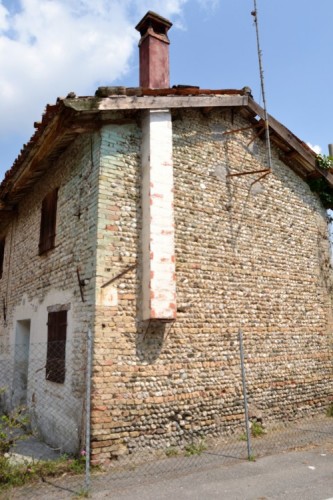
ORIGINS
The link between Friuli and eastern Veneto dates back to Roman times, when the city of Iulia Concordia depended legally and economically on Aquileia. Always dependent on the Church of Aquileia from the religious point of view, the Diocese of Concordia became in the Middle Ages a fundamental part of the Patriarchate of Aquileia. Until the Napoleonic period, when the mandate of Portogruaro was aggregated to Venice, the eastern Veneto was physically, legally and culturally “Friulan”. In the light of its history, that of the Friulians in Veneto is today a more cultural than ethnic identity.
TERRITORY
The Venetian territory mainly affected by the presence of the Friuli “koiné” is that of the low plain between the rivers lemene and cut, with particular regard to the Municipalities of San Michele al Tagliamento, Fossalta di Portogruaro, Teglio Veneto, Gruaro e Cinto Caomaggiore.
SIZE AND REPRESENTATION
There is no census of Friulanophones in Veneto. The Friulian language is now spoken by a small group of elderly people, the last witnesses of rural and rural culture. At the administrative level, almost all municipalities are sensitive to issues relating to the Friulian identity, although few initiatives are implemented for this purpose. There is an exception to San Michele al Tagliamento, where still today about half of the population is Friulanophone and where operates a municipal council for "Friulanità". It should also be remembered that the Friulan linguistic minority is protected by L.R. 73/1994 of Veneto.

LINKS
https://digilander.libero.it/AntonioPanciera/ - FOGOLÂR FURLAN. "Antonio Panciera". del Veneto Orientale tra Livenza e Tagliamento.
http://www.labassa.org/ - Cultural association aimed at the knowledge, enhancement and protection of the heritage of the cultural identities of Latisano and Portogruaro.
OTHER RESOURCES
Giovanni Frau, I dialetti del Friuli, Società Filologica Friulana 1984.
San Michêl, a c. di Giuseppe bergamini e Giovanni Pillinini, Società Filologica Friulana 1985.
Una civiltà che sta scomparendo alle soglie del terzo millennio. Analisi storica della civiltà contadina in un territorio compreso fra le due Regioni e diviso da un fiume, a c. di Enrico Fantin, La Bassa 1999.